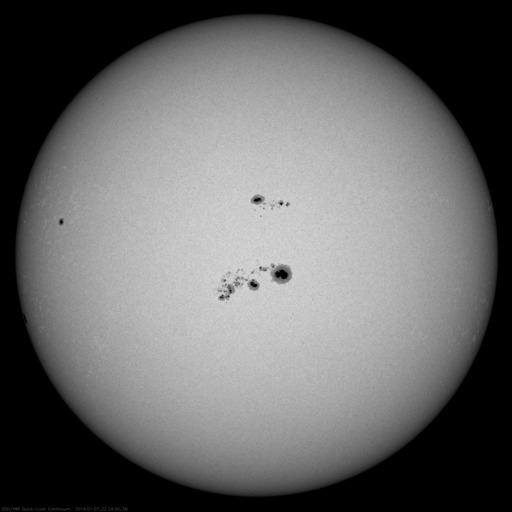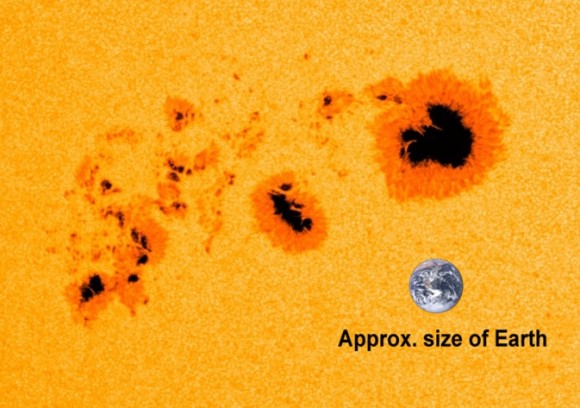
UPDATED JANUARY 9, 2014 AT 2100 UTC (3 P.M. CST): The anticipated coronal mass ejection from the X-flare on January 7 has now struck Earth. It arrived around 20:00 UTC or 2 p.m. CST. That makes tonight good for auroras at high latitudes. According to spaceweather.com:
Although the initial impact was weaker than expected, geomagnetic storms could still develop as Earth passes through the CME’s wake. NOAA forecasters are sticking by their prediction of a G3-class event on Jan. 9-10, which means high-latitude sky watchers should remain alert for auroras.
The powerful flare on the sun on January 7, 2014 is what created conditions favorable to auroras. Will you see the northern lights at lower latitudes than usual tonight? Space weather forecasters were saying yes at first, but now they’re not so sure. As always with night sky phenomena, the best way to know is to look outside when it gets dark, and check again periodically throughout the night, especially if you live at a northerly latitude.
On January 8, The NOAA NWS Space Weather Prediction Center wrote on its Facebook page:
CME on the way…Want to see the northern lights?
We have completed initial analysis of the CME [coronal mass ejection] associated with today’s X1 … solar flare from Region 1944 (center disk) and have developed a forecast for a geoeffective event. Despite the CME not coming directly at Earth, a partial impact to the magnetic field that protects Earth is expected and a resulting geomagnetic storm as high as G3 (strong) levels is forecast to begin early to midday (UTC) on Thursday, 9 January (just after midnight early morning hours EST). Approximately 130 days of G3 conditions occur every 11 years, so this isn’t something out of the ordinary – though it has been a while.
If you don’t mind getting up early and have few to no clouds in your area overnight, you may get a chance to see the aurora if you live in the northern lower 48.
There have been wonderful auroras seen already this year at high latitudes. We’re still hoping for some great pics from the January 9-10 display.
Gallery: First auroras of 2014

The movie above shows the January 7 X-class flare. An X-class flare is the most powerful kind of solar flare. It peaked at 1:32 p.m. EST (1832 UTC) on January 7. The movie, which is from NASA’s Solar Dynamics Observatory (SDO), shows light in the 1600 Angstrom wavelength showing both sunspots visible on the sun’s surface and the flare in the solar atmosphere. NOTE: This video loops 4 times.
Solar flares are powerful bursts of radiation from the sun. Harmful radiation from a flare cannot pass through Earth’s atmosphere to affect our human bodies on the ground. However – when intense enough – they can disturb the atmosphere in the layer where GPS and communications signals travel. This disrupts the radio signals for as long as the flare is ongoing, anywhere from minutes to hours.
To stay updated on how this event might impact Earth, visit NOAA’s Space Weather Prediction Center at https://spaceweather.gov.




Bottom line: Space weather forecasters are calling for strong auroras, or northern lights, on Thursday, January 9 through Friday morning, January 10, 2014. The CME, or coronal mass ejection has now arrived in Earth’s vicinity.











